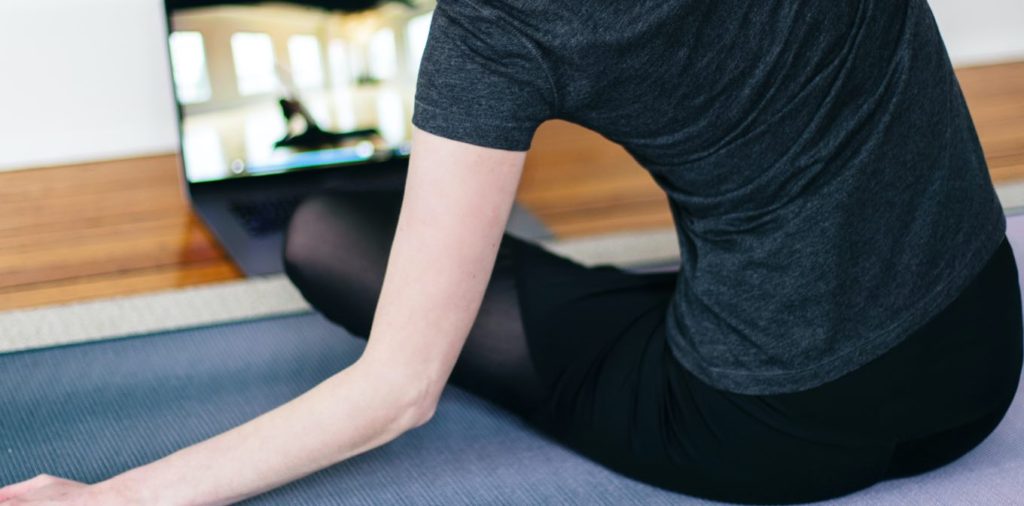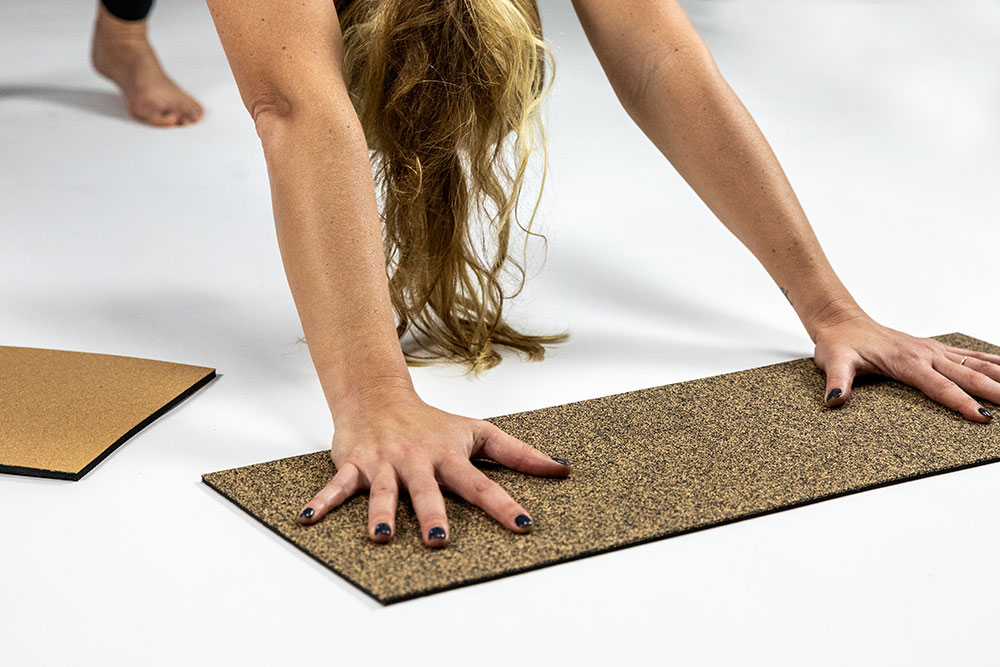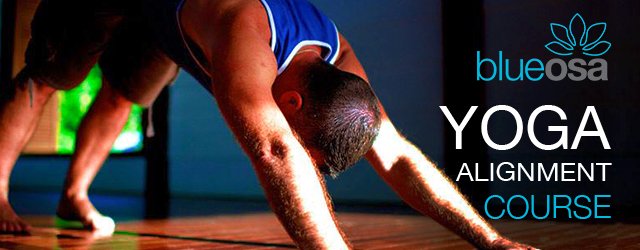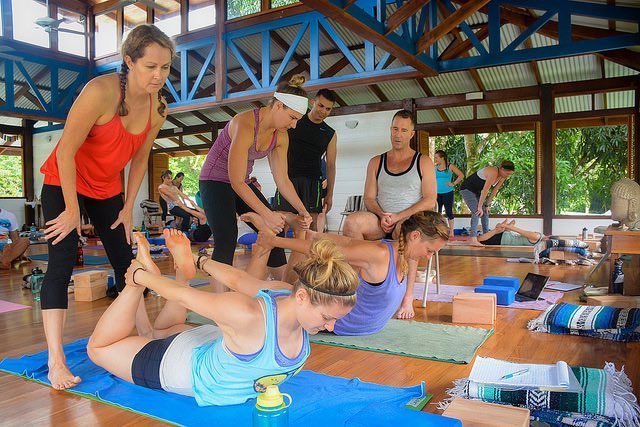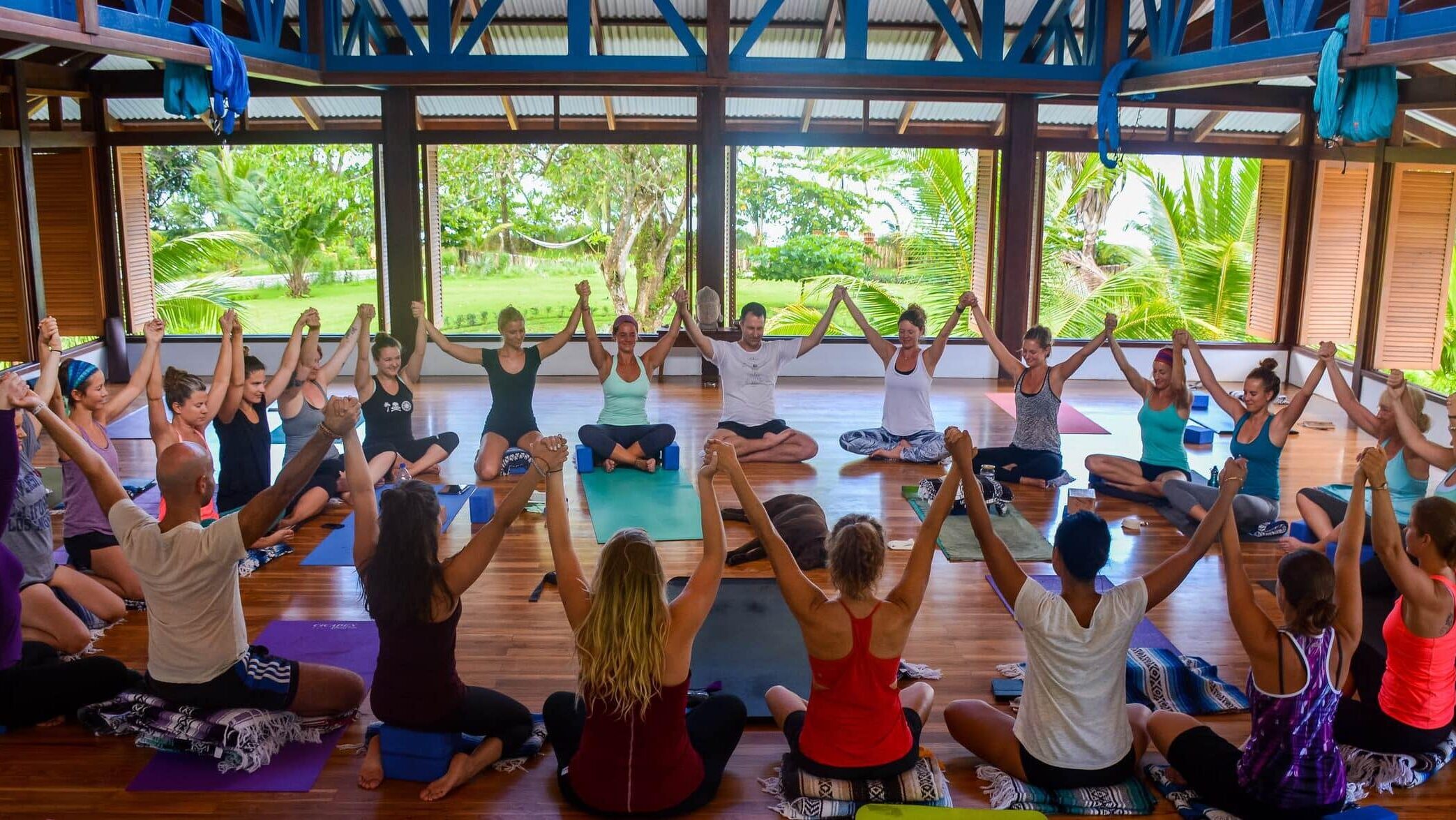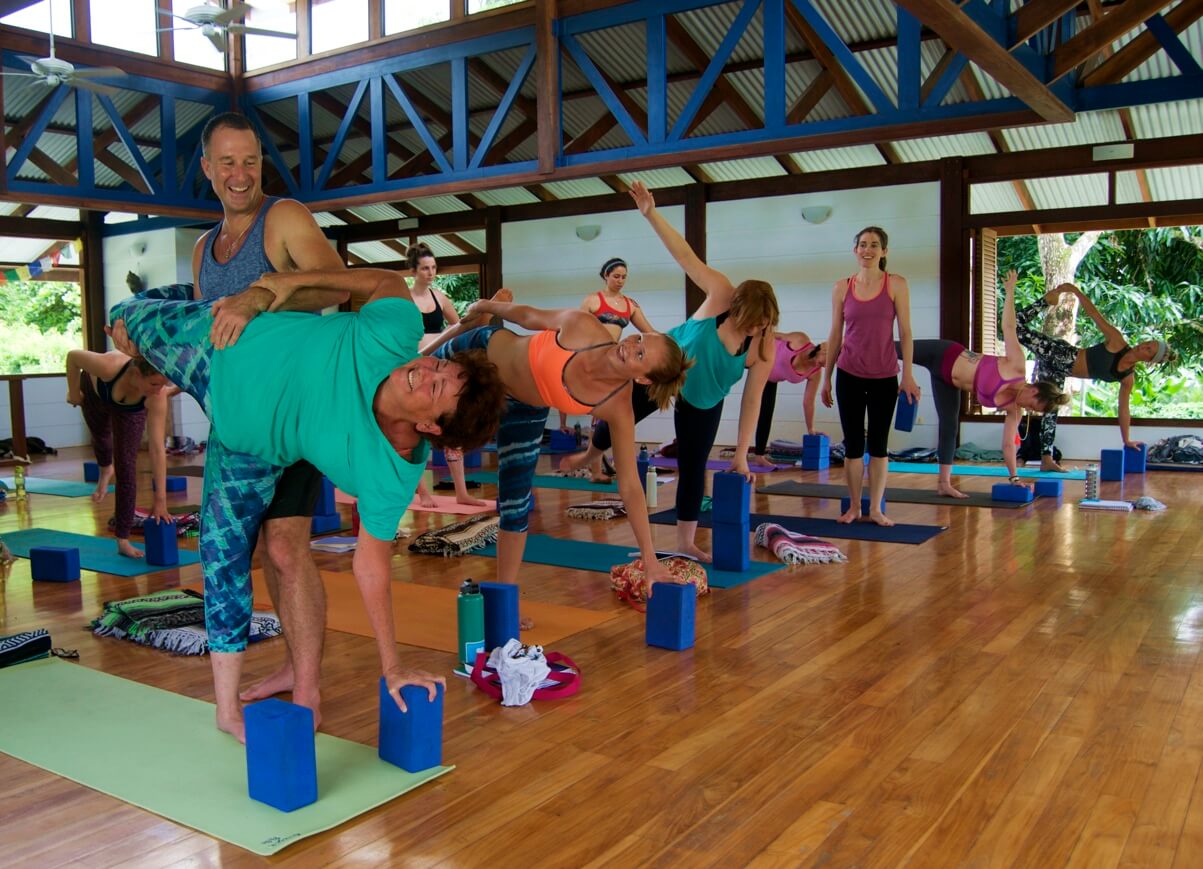Want to learn how to do yoga at home but not sure where to start?
It might sound cliche, but it’s true: yoga is for everyone, everywhere. Learning how to do yoga at home is a profound way to promote total mind-body-soul wellness. If you’re new to yoga, it’s always a good idea to learn the building blocks of a safe and effective at-home practice before dropping straight into Wheel Pose. Whether you want to incorporate yoga into your daily routine or you want to start training to become a yoga teacher, you have to start with the basics before you can become a master yogi.
With that said, here’s our guide to beginner’s yoga at home:
How to Do Yoga at Home: 10 Tips for Beginners
“All kidding aside, if everyone did yoga, we’d have world peace,”
Rory Freedman.
It’s a bold claim, but it might very well be true.
Yoga quiets the mind so we can access the teacher within us. It’s a practice for the soul – one which transforms the way we see ourselves and our place within the world. Practicing yoga is a potent way to find serenity in a turbulent world (even if it’s from the comfort of your home.)
Here’s how to safely get started:
1. Understand What Yoga is All About
Why are you interested in learning how to do yoga at home?
Is it to become more flexible? To tone your arms? To complement your current exercise routine with stretching?
I’ve got some bad news:
The practice of yoga isn’t about any of those things.
Sure, strength and flexibility are nice benefits of a regular yoga practice – but they’re not the purpose of yoga. In fact, there’s not a single mention of stretching or flexibility anywhere in the Yoga Sutras or Hatha Yoga Pradipika.
That’s because yoga isn’t an exercise at all. Rather, the purpose of yoga is to integrate the mind, body, and spirit – to quiet the mind, so we become more aware of our true nature.
We practice asanas, or the yoga postures, to connect the mind and body, to calm our brains, and remove energy blockages so we can tap into our inner teacher.
So while yoga might feel very much like exercise, you don’t need to flip into a handstand to qualify as a yogi.
That said, if you want to learn how to do yoga at home for mobility or other physical benefits, that’s okay, too!
As I said, yoga is for everyone. What matters is you consistently show up on your mat and tune into your breath. The holistic advantages will undoubtedly follow.
Release your expectations for what an at-home yoga practice should look like. Instead, embrace the fact that yoga is an ongoing process and settle in for the exciting journey.
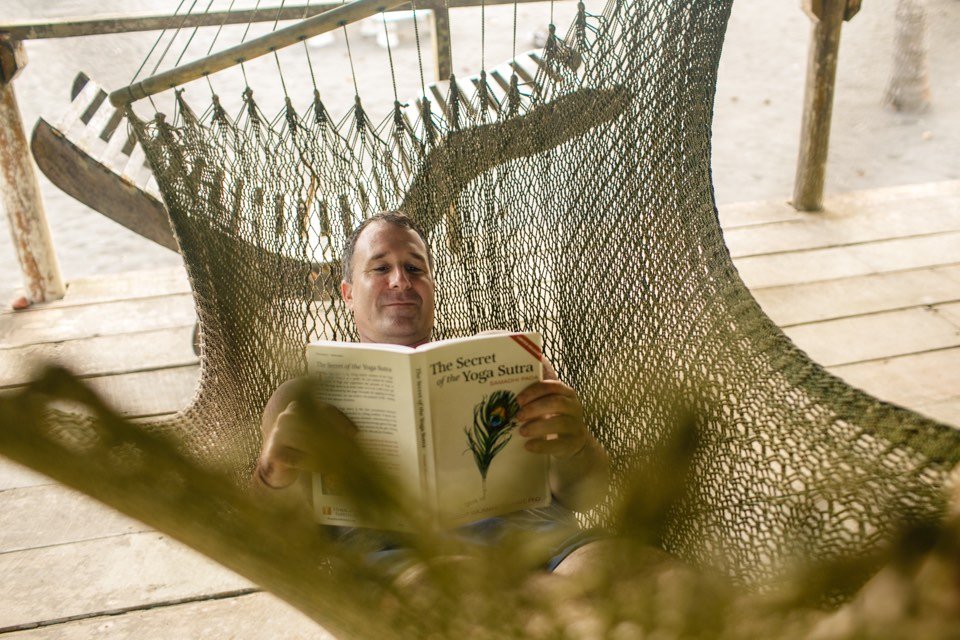
2. Grab Yoga Accessories
You can learn how to do yoga at home without any props (or even a yoga mat.) So, don’t let investing in yoga equipment be what stops you from beginning an at-home practice.
However, having a few yoga props on hand can ensure you modify yoga postures as your body needs. This makes it easier to follow along with online yoga classes and keeps you safe, too.
Here are the yoga props I recommend:
- A non-slip yoga mat. A high-quality yoga mat pays big rewards – especially when you’re trying to keep your grip amid a sweat puddle. Plus, you can find eco-friendly and sustainable yoga mats, so you feel good about your investment.
- Yoga blocks. Avoid hyperextending or collapsing in poses with yoga blocks. You can use the blocks on different levels to keep proper alignment while still experiencing all the benefits of the poses. Don’t have yoga blocks? You can also use a stack of books, cushions, or even a chair!
- Yoga straps. Yoga straps are another tool to help you maintain good posture and alignment. They can be accommodating if you’ve got tight hamstrings and shoulders. A belt, tie, or thin blanket all make suitable yoga strap substitutions.
3. Listen to Your Body
“Listen to your body.”
You’ll hear it from yoga instructors time and time again. But what does it mean – and how do you listen to your body when practicing yoga at home for beginners?
Here’s the thing:
Listening to your body is about paying attention.
What inner and outer signals is your body giving you? Is your heart beating rapidly? Is there a twinge of discomfort in your shoulder?
These are all important messages from your body.
Remember, yoga isn’t about the ability to touch your toes. So, just because a posture looks a certain way or an online teacher cues a specific flow, that doesn’t mean your body must follow suit.
As you continue to practice yoga, you’ll become more aware of your body and what she has to say.
If you experience any of the following signs when learning how to do yoga at home, make modifications, so the practice works for you:
- Short, uneven breaths
- Extremely high heart rate
- Dizziness
- Discomfort
- Pain or tingling
- Crackling, popping joints
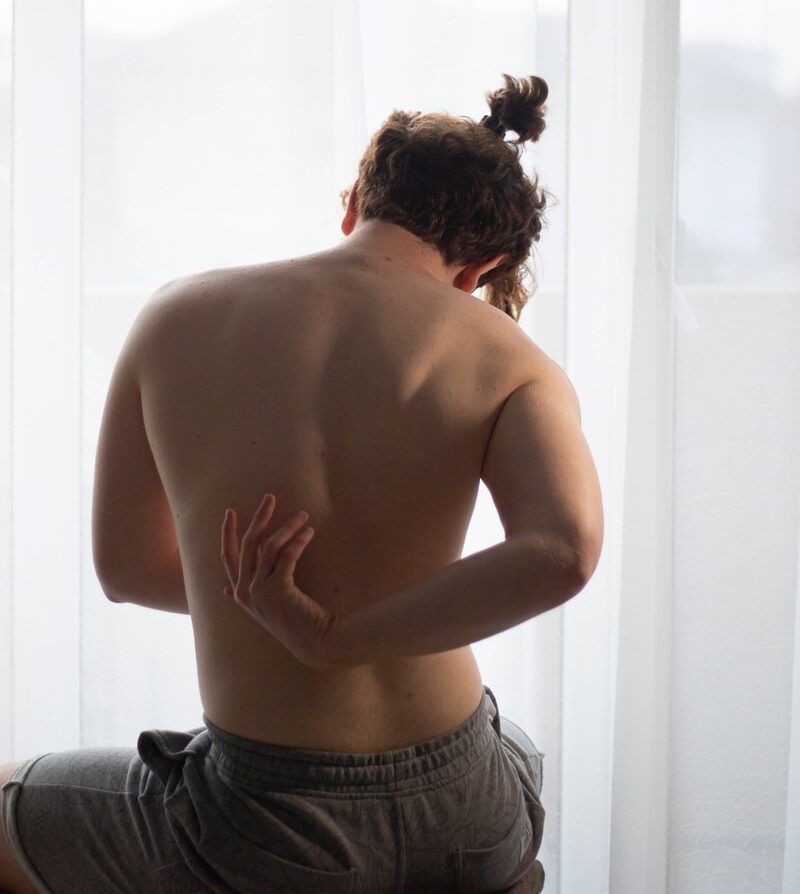
4. Learn Some Yoga Basics
Though I’ve been practicing yoga for the better part of a decade, it’s the “basic” yoga poses I come back to daily. Not only do they offer lasting benefits, but a firm grasp on foundational yoga poses will help you flow through your practice safely.
Here are a few yoga poses I recommend to every beginner:
- Downward Facing Dog
- Mountain Pose
- Child’s Pose
- Sun Salutations
- Warrior I, II, and III
- Triangle Pose
Want to master foundational yoga poses and learn how to safely move deeper into the postures? Don’t miss Yogi Aaron’s Posture Lab.
Introductory yoga poses are powerful, which is why you’ll encounter them so frequently in online yoga classes.
While the ego might want you to flip into an inversion from the get-go, trust the process and start with beginner-friendly yoga poses.
And if any of these yoga poses start to feel too challenging, remember you can always rest in Child’s pose as you find a steady inhale and exhale. Yoga is about the mind-body connection (not the posture), so remember Tip No. 3 and honor your body where it’s at daily.
5. Watch Online Yoga Classes and Tutorials
Sometimes the most challenging part of doing yoga at home is simply showing up on your mat. But what if you had a teacher or coach who could hold you accountable?
Well, I’ve got good news for you: You don’t have to start your at-home yoga journey alone. Online yoga classes are a fantastic way to practice yoga anywhere, at any time.
A quick YouTube search will reveal thousands of beginner yoga videos. Find a teacher you resonate with and discover how to do yoga at home!
Blue Osa’s Online Yoga Academy is overflowing with courses, covering everything from meditation to relaxation to yoga flows. Here’s an entire playlist of full-length yoga classes taught by Yogi Aaron.
Whether you want to manifest your life’s purpose, learn about Applied Yoga Anatomy, or even discover how to safely practice handstand, there’s an online yoga class waiting for you at the Blue Osa Online Yoga Academy.
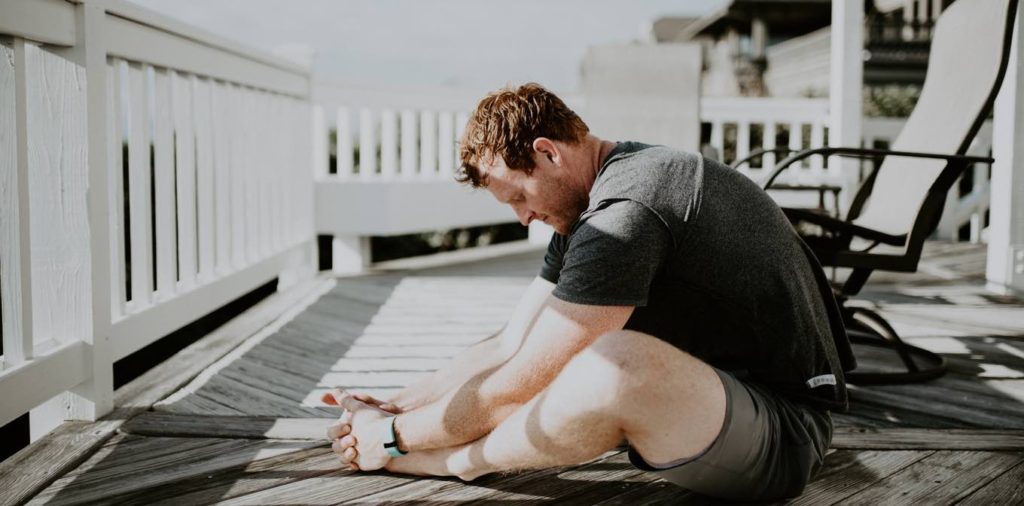
6. Commit to an At-home Yoga Routine
Tony Robbins says it best: “It’s not what we do once in a while that shapes our lives. It’s what we do consistently.”
It’s not easy to consistently show up on our yoga mats, especially when life is hurling distractions at us.
When you need yoga the most is when it’s hardest to self-motivate and do the work.
So, don’t wait for motivation to strike (it probably won’t.) Instead, schedule your yoga practice. Write it down in your agenda and make it non-negotiable.
If you’re a beginner wondering how to do yoga at home, set a realistic goal. Even practicing yoga just once a week can have profound, lasting benefits.
If you’re really busy, try starting with just five minutes of mindful breathing or a couple of sun salutations a day. You’ll likely find you want to keep practicing once you begin. Just commit to showing up and let the practice guide you.
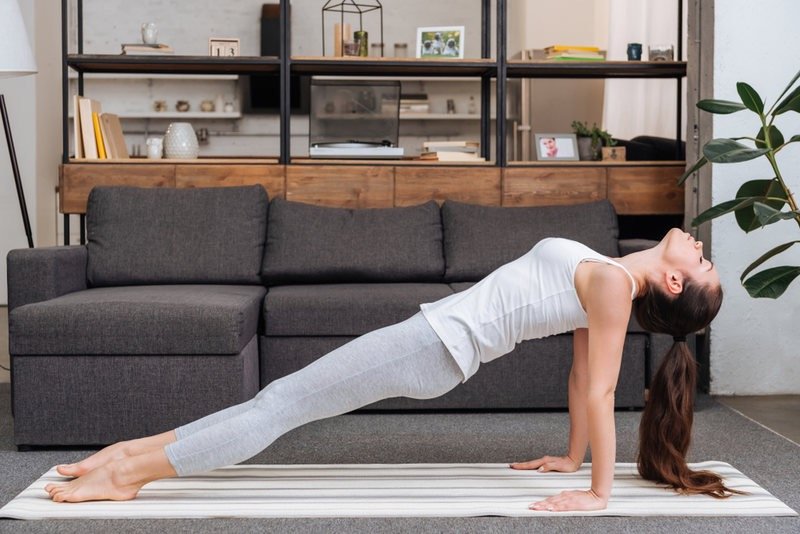
7. Create a Designated Yoga Space
You don’t need an at-home yoga studio or a sweeping yoga deck to practice; a small space in any room of your house should do the trick.
I find it easier to commit to my yoga practice when I have one designated space for yoga that’s clear of distractions. When I step up to the space, my mind and body automatically know what’s in store – no negotiating with my monkey brain is necessary. Plus, my family knows this is my space and time for wellness, and they respect that.
Here are a few tips for finding an at-home yoga space that works for you:
- Choose a quiet spot in the house where you can shut out distractions.
- Consider a spot near a wall if you plan to practice inversions.
- Clear enough space to move safely without bumping into objects.
- Make the space your own! Pillows, candles, and incense appeal to the senses and, while indeed not necessary, can make a meditation experience more inviting.
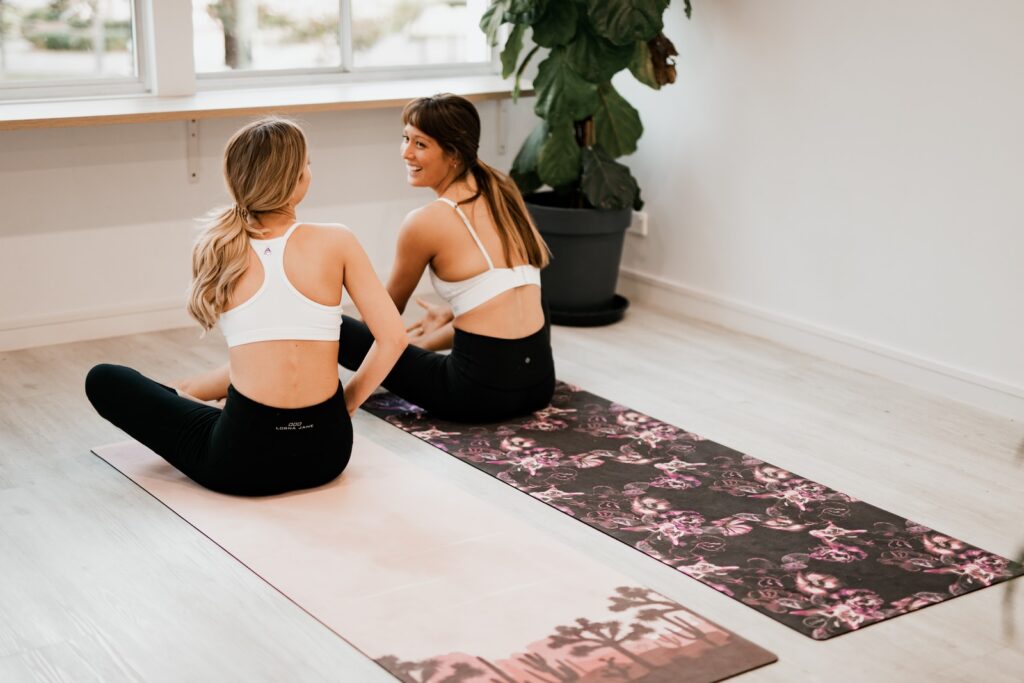
8. Find an Accountability Buddy
We’ve all been there before.
A new hobby piques our interest, so we go out and purchase all the necessary equipment – the cake decorating tools, the rock climbing gear.
We spend a weekend pouring through online videos and learning about said new hobby. Then, life happens. Soon the gear is relegated to the back corner of our closet, where it acquires a thick layer of dust.
Don’t let your yoga mat encounter the same fate as my bread maker.
Find a yoga buddy who can hold you accountable for your yoga practice. They don’t need to practice yoga with you. Often telling someone your goals is all it takes to inspire action.
Tip: Be sure to choose a yoga accountability buddy who will build you up and support your new goal!
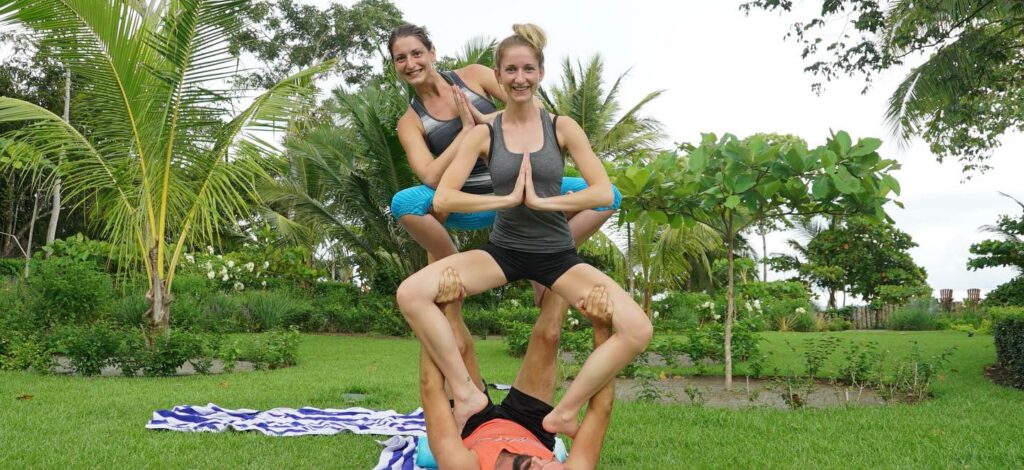
9. Keep Yoga Fun
Some days your yoga practice will feel light and easy. Other times, you might feel distracted or sluggish. It’s all part of the practice!
Yoga shouldn’t feel like a chore, so don’t take it too seriously. Accept your mind and body no matter what, and – at the risk of sounding like a broken record – just keep showing up.
You don’t need my permission to play or to find joy on and off your mat. Make your yoga practice work for you. And, when all else fails, just smile!
10. Jump-start Your At-home Yoga Practice with an Immersive Yoga Retreat
For years, I struggled with how to do yoga at home. I knew the mental, physical, and spiritual benefits of the practice, but that didn’t make it any easier to roll out my mat on the tough days.
Now, I have a regular at-home yoga practice and the tools I need to connect with my deep inner knowing – no matter the chaos swirling around me.
What changed?
I invested in myself and signed up for a life-changing 28-day Yoga Teacher Training at Blue Osa.
The month was transformational for countless reasons. I reconnected with my life’s purpose. I gained the necessary knowledge to lead others towards greater health and wellness. I developed a rock-solid yoga practice that I could take with me anywhere, for all life’s ups and downs.
And it is this practice I still call on daily.
If you’re new to yoga, you might not be ready or interested in yoga teacher training. However, a one-week yoga retreat could be exactly what your mind, body, and soul need to jump-start your at-home yoga practice.
Blue Osa hosts a variety of group retreats throughout the year, each led by experienced teachers worldwide. From surf and yoga retreats to chakra exploration, there’s a yoga retreat for every interest and level.
Soak in the sounds of nature from our expansive ocean view yoga platform. Immerse yourself in the fresh jungle air while spotting monkeys and macaws. Tune out distractions so you can discover what you really want – and leave with the tools you need to maintain a life-changing at-home yoga practice.
Check out our upcoming yoga retreats to find the perfect option for you.
Tags: empowerment, Yoga Pose, yoga practice, yoga therapy
Book/Inquire Now
Got pain? This will help you!
YOU DESERVE TO LIVE PAIN-FREE...
Receive 7 short, simple, and effective practices to alleviate knee, hip, low back, neck, shoulder pain, and more!
All you need is 5 minutes per lesson and it's FREE!
This revolutionary approach to yoga is new, and no one else is teaching this! Since I created Applied Yoga Anatomy + Muscle Activation™ and started teaching it consistently, I've witnessed students heal long-standing injuries, access yoga postures they never thought possible, and tell me over and over again how their body just feels better.
I hope you'll join me on this journey!
~Yogi Aaron
Is Yoga Teacher Training Right For Me?
We Created This FREE 5 Part Series So You Can Get All The Information To Make The Right Choice.
In this series, you will learn:
-
- Am I a candidate for yoga teacher training??
-
- What will I learn in a YTT?
-
- Do I need to have a perfect downward dog to attend YTT?
14-Day 200-Hour Yoga Teacher Training in Costa Rica
If you are looking for a 14-day 200 hour Yoga Teacher Training Costa Rica Immersion, you have landed in the right place. Join the next one!
300-Hour, 28-Day Yoga Teacher Training
Do You Feel Called To Something Greater?
This 300-Hour Yoga Teacher Training immersion training at Blue Osa will immerse you in yoga for one month.
You will have the specific transformational skills and yogic practices you need in order to connect with your higher purpose.
And more! You will be able to offer these transformative skills to others!

